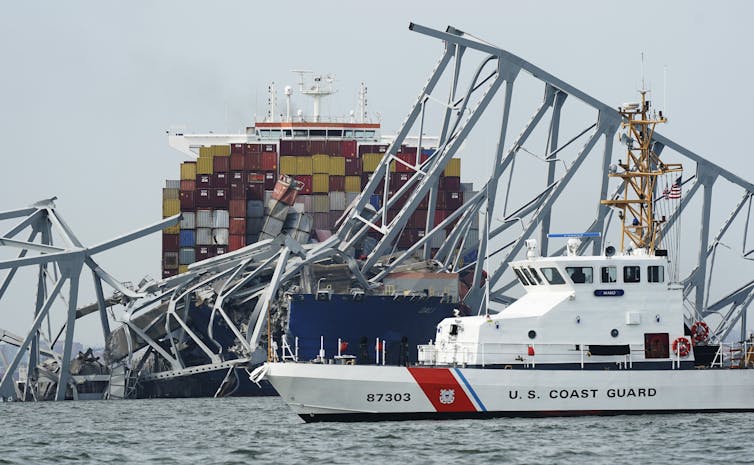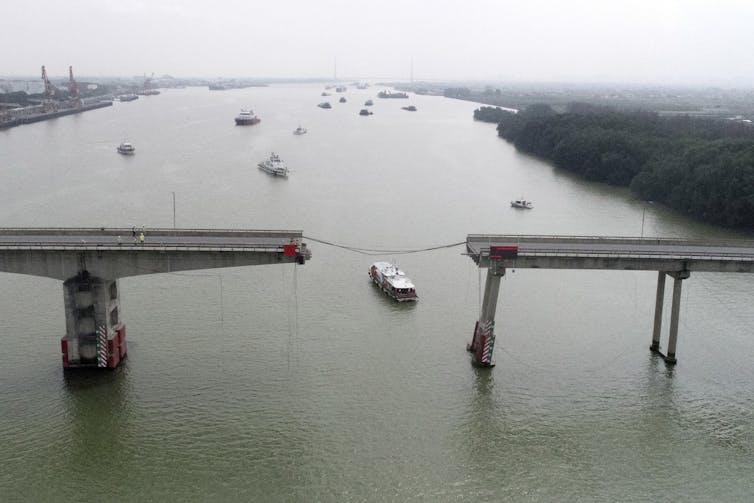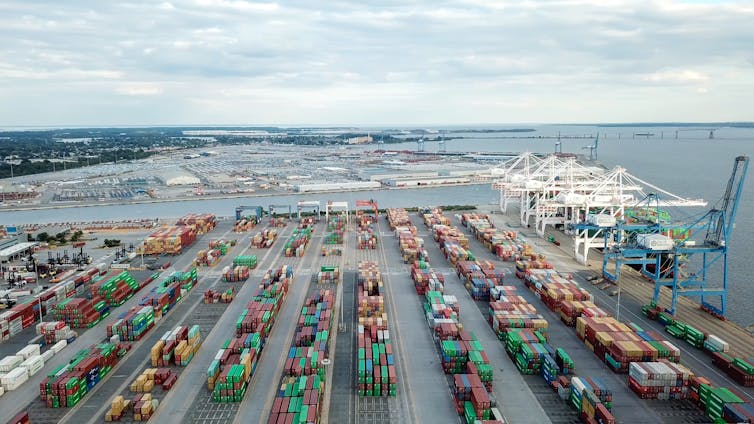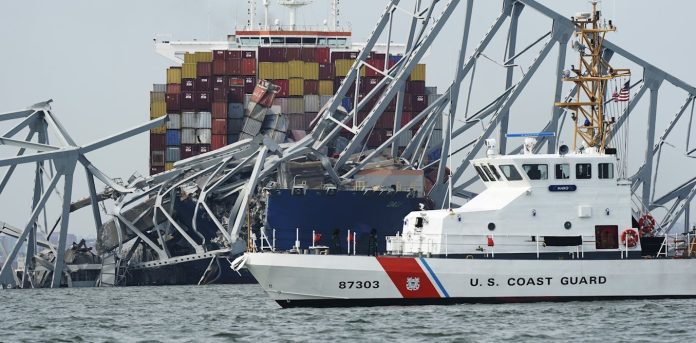A human, environmental and economic emergency response to the Baltimore Key Bridge collapse

By Jack L. Rozdilsky, York University, Canada
On March 26, the container ship Dali in Baltimore’s industrial harbour struck an interstate highway bridge, causing it to catastrophically collapse. Eight highway maintenance workers were thought to be on the bridge at the time of collapse. Two were rescued, and two bodies were recovered. Four workers remain missing, and are now presumed dead.
The ship-bridge collision was a technological disaster, defined as an event caused by a malfunction of a technological structure or human error in controlling or handling the technology.
In this case, the root cause of the disaster involved the interaction of two types of transportation technologies: a moving container ship and a fixed bridge.
A history of bridge collapses
The disaster is not unprecedented — between 1960 to 2015 there have been 35 major bridge collapses due to collisions by ships or barges.
On Feb. 22, in Guangzhou, south China, a container ship rammed into a bridge pillar leading to the subsequent collapse of the Lixinsha Bridge, and killing five people.

The collapse of Baltimore’s Francis Scott Key Bridge serves as another stark reminder that despite our technological prowess, accidents involving transportation technology will continue to occur when we least expect them.
The immediate response
The immediate response started with a mayday call from the troubled ship causing police to take action to prevent more cars from going onto the bridge. U.S. Coast Guard watchstanders received a report at 1:27 a.m. of a container ship colliding with the bridge, and immediately deployed search and rescue boats to the shipping channel in Baltimore’s harbour.
The first 24 hours after the collapse focused on saving more lives, to no avail. People who survived the 56-metre fall from the bridge deck into the Patapsco River then faced water temperatures of nine degrees Celsius.
If not immediately rescued, chances of survival in cold river water become difficult due to cold shock and hypothermia setting in.
Tons of submerged bridge wreckage and tidal currents created perilous conditions for rescue operations. After an extensive search and rescue effort until sunset on March 26, the next-day emergency response activity transitioned to the grim task of recovery of the dead.
About eight hours after the collapse, the mayor of Baltimore declared a state of emergency. The governor then issued an executive order, declaring a state of emergency for Maryland.

A state of emergency allows officials to temporarily use extraordinary powers. Suspension of laws and regulations, quick redirection of funds, rapid deployment of personnel and the facilitation of federal aid are all reasons why a state of emergency would be declared.
The collision caused all maritime traffic to be stopped — a significant impact on one of the busiest harbours in the United States as a port of entry for foreign goods. Most of the Port of Baltimore’s shipping terminals are located within the area blocked by bridge collapse debris.
In this case, the emergency declarations may allow governments to waive regulations around competitive bidding to speed the eventual bridge rebuilding project.
Pollution and debris clean-up
Immediately after the collision, response operations include preventing environmental contamination. As the distressed cargo ship was departing to the Port of Colombo, Sri Lanka, it had on board about 1.8 million gallons of fuel. Out of the thousands of containers being transported, 56 containers contained 764 tons of hazardous materials.
Removing the damaged steel latticework of the bridge’s trusses off the bow of the ship will be a challenging feat.
Debris now blocks navigation along the Fort McHenry Channel. The U.S. Army Corps of Engineers has started underwater surveys to assess what needs to be done for debris removal.
The debris removal effort will be especially complex as sensitivity is required. In and around the same area where the federal debris removal assessment is taking place, rescue officials were searching for bodies — the search has been paused for safety reasons.
The Maryland State Police underwater recovery team has responsibilities involving the recovery of the bodies of the missing highway workers.
Unified command response
Unified command is an emergency management technique applied when there is more than one agency with incident jurisdiction.
The Fort McHenry navigation channel and the I-695 bridge itself fall under multiple local, state and federal jurisdictional responsibilities. On March 27, a unified command joint information centre was established to co-ordinate emergency responses.
Sadly, within the first 48 hours search and rescue transitioned to search and recovery. Operations will be moving in the direction of salvage and port recovery.
Going forward, the main priority is clearing the shipping channel to reopen the Port of Baltimore. True to form to the characteristics of a technological disaster, it will take a while to determine the scope of the impacts.
For the immediate future, timelines for when the Baltimore Harbour can return to normal will remain elusive.![]()
Jack L. Rozdilsky, Associate Professor of Disaster and Emergency Management, York University, Canada
This article is republished from The Conversation under a Creative Commons license. Read the original article.



